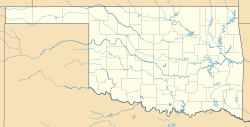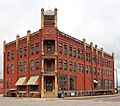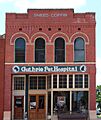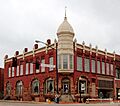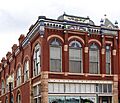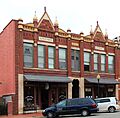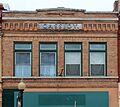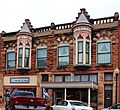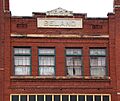Guthrie Historic District (Guthrie, Oklahoma) facts for kids
|
Guthrie Historic District
|
|
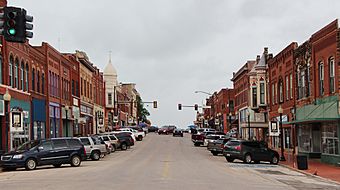
Guthrie Historic District, Guthrie, Oklahoma
|
|
| Location | Guthrie, Oklahoma |
|---|---|
| Area | 31 acres (13 ha) |
| Architect | Multiple |
| Architectural style | Multiple |
| NRHP reference No. | 74001664 |
Quick facts for kids Significant dates |
|
| Added to NRHP | June 13, 1974 |
| Designated NHLD | January 20, 1999 |
The Guthrie Historic District (GHD) is a special area in Guthrie, Oklahoma, USA. It's recognized as a National Historic Landmark District, which means it's a very important place in American history. This district covers the main business part of Guthrie. It includes many old buildings that tell the story of how Oklahoma began.
The district was officially named a National Historic Landmark in 1999. This was because of its important role as the first capital of the Oklahoma Territory. It was also the first capital of Oklahoma when it became a state. The district covers about 31 acres (12.5 hectares). It includes many historic buildings.
Contents
Why Guthrie is Important
The most important time for the Guthrie Historic District was from 1889 to 1910. Most of the historic buildings you see today were built during these years. A famous architect named Joseph Pierre Foucart designed many of them.
Guthrie started in 1889 after the Land Rush of 1889. This was when new lands were opened for settlement. Guthrie quickly became the capital of the Oklahoma Territory. When Oklahoma became a state on November 16, 1907, Guthrie was its very first state capital.
However, in 1910, the state government moved to Oklahoma City. After that, Guthrie became less important for business. Because of this, many of its old buildings stayed the same for a long time. This is why the Guthrie Historic District still looks so historic today.
Building Styles and History
The buildings in the Guthrie Historic District show many different architectural styles. These styles were popular in the late 1800s and early 1900s. Some of the styles you can see include:
- Late Victorian
- Italianate
- Romanesque
- Late 19th & Early 20th Century Revivals
- Beaux Arts
- Classical Revival
- Late 19th & Early 20th Century American Movements
- Commercial Style
Some buildings in the district are so important that they are also listed separately on the National Register of Historic Places. These include:
- Carnegie Library
- Co-operative Publishing Company Building
- Logan County Courthouse
Historic Buildings in the District
When the Guthrie Historic District was created, buildings were sorted into two groups. These were "Contributing" or "Non-contributing."
- Contributing buildings are those that add to the historic feel of the district. They had to be built between 1893 and 1910. They also had to keep their original look and purpose.
- Non-contributing buildings either were built later or changed too much. They don't help tell the district's original story.
Many buildings in the district are great examples of early Oklahoma architecture. For instance, the Old Santa Fe Depot of Guthrie (Union Station) was built in 1902. The Co-operative Publishing Company Building is another key historic site. The Logan County Courthouse is also a very important building. It was built in 1907 and used to be the state capitol.
Images for kids


